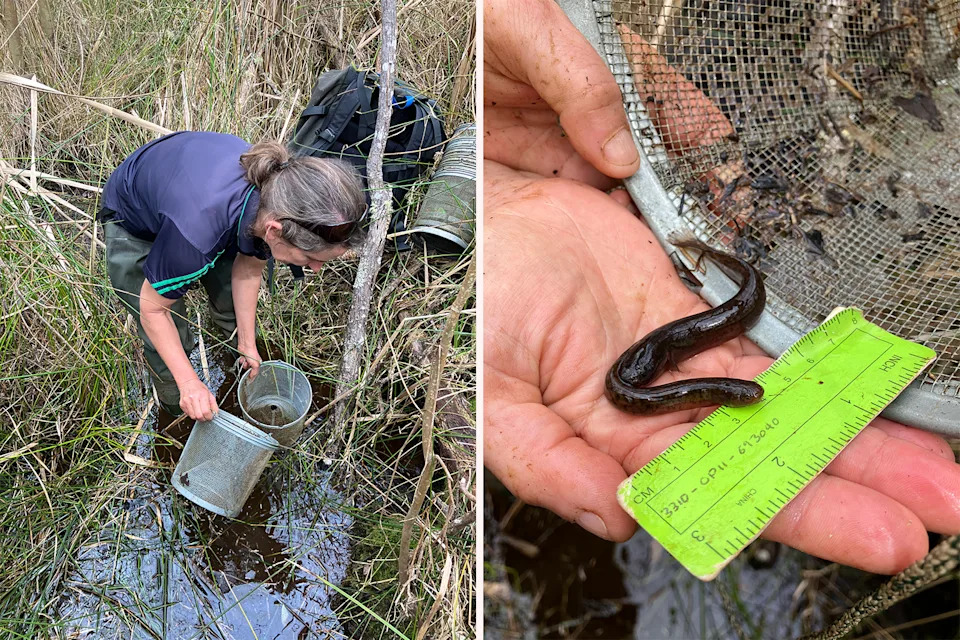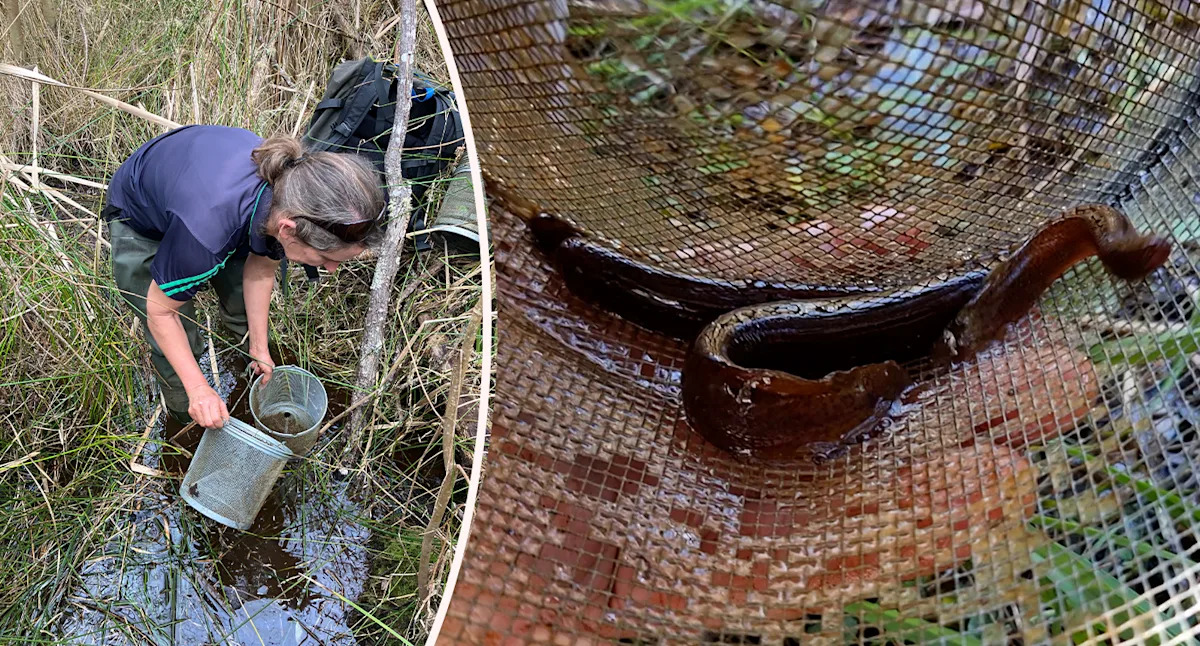Underneath a tree, in the swampy waters of a pond at the bottom of a valley, New Zealand species recovery experts have found a small colony of rare eel-like creatures.
Black mudfish were once the nation’s most common freshwater fish, but numbers have sharply declined as habitat has been destroyed, and it was thought to be locally extinct at the farm the team were searching, northwest of Auckland in Helensville.
Matthew Bloxham, a freshwater ecologist at Auckland Council, said the find was “exciting” because there are only half a dozen sites across the city where the species is known to survive, and none of them are secure. Sadly, one population was recently destroyed when it was discovered during road widening works, and attempts to recover the fish failed.
“We occasionally find them in the most unlikely habitats, but only very occasionally,” Bloxham told Yahoo News Australia.
Related: Camera captures critically endangered nocturnal animal not seen since the 1990s in NSW
Incredible survival technique of swamp-dwelling fish
Black mudfish are famous for their resilience to drying conditions, which they can survive for months by secreting themselves into mud or under wood, then lowering their metabolic rate. Today, most of the locations where they survive dry up over the summer.
“They prefer permanent water, but drying gives them a slight advantage. It allows them to outcompete other fish that can’t make a go of things,” Bloxham said.
The species grows to 12cm, and its movement is more similar to that of an eel. Bloxham, who has been in his role for 12 years, monitoring the region’s ecology, admits to being biased when it comes to how much he appreciates its appearance.
“They’re quite muted, they’re not colourful, and they look like swamp-dwelling fish. But they’re kind of cute,” he said.

The team discovered mudfish of various sizes in the swamp in Helensville. Source: Emma Baker
Major threat to last of the black mudfish
Black mudfish thrive when undisturbed, but it is considered a fragile “Goldilocks species” that requires habitat to be “just right”. Plans to rewild captive-bred fish from Auckland Zoo haven’t eventuated because a release location hasn’t been found.
“They’re not the kind of fish that are very adaptable. They can’t just move from one wetland into another, because they have become more piecemeal in terms of geographical location,” Bloxham said.
Today, they’re only found in small pockets of the North Island — lower Waikato, Hauraki Plains, Auckland, and Northland. Invasive fish species and plants have denuded their preferred wetland habitat — in Waikato, around 90 per cent has been destroyed.
Moment rare fish rediscovered in pond
Previous surveys of the Helensville rediscovery site had failed to find any of the fish since 2010, long before Bloxham joined the team. Over time, the surrounding area had been turned into pasture, and vegetation had fallen into the wetlands, eroding them.
Looking at aerial images, the team couldn’t find a suitable location to set up their nets, and then walking across the paddocks in September, the landscape looked dry.
But then they found eight in a small pond around described as “half the size of a kitchen table”. And oddly, they were found in water directly under a willow tree — an introduced species known for degrading mudfish habitat.
“They seem to be breeding in there, which is really good.” Bloxham said.
More stories from across the ditchSecond new population discovery renews hope for rare fish
In the coming years, climate change is expected to continue to dry out habitats, putting further pressure on the fish, which is listed as At-Risk of Declining on the New Zealand threatened species classification system, and endangered on the international Red List.
For over a decade, the Auckland council team has searched for new populations of black mudfish, but they’ve only found two populations in that time.
“But what’s really interesting is that as a result of the [September rediscovery], we had a bit of a cast around, looking for similar wetland habitat close by, and we found one within five kilometres that had all the same attributes,” Bloxham said.
“And we just found another population there last week.”
The find has given the team hope that the species can be saved from the threat of extinction. But the challenge ahead is not only finding more black mudfish, but also protecting the habitats of known populations.
Love Australia’s weird and wonderful environment? 🐊🦘😳 Get our new newsletter showcasing the week’s best stories.


